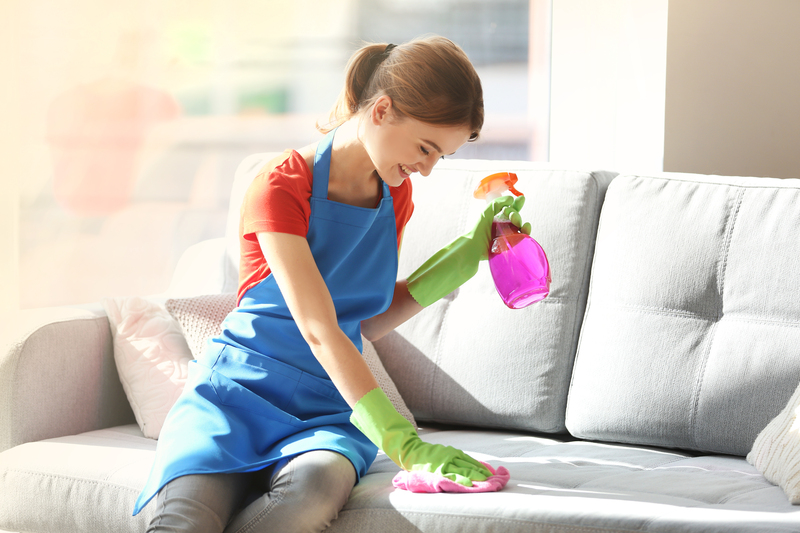Steaming a Leather Sofa: What You Need to Know
Posted on 17/03/2025
Leather sofas are a popular choice for many households due to their luxurious look and durability. However, maintaining their appearance can be challenging. One method that can be used to clean and rejuvenate leather furniture is steaming. But is it really safe and effective? In this article, we will delve into what you need to know about steaming a leather sofa, including the pros and cons, along with some useful tips and takeaways.
Why Consider Steaming Your Leather Sofa?
Steaming can be an excellent method for cleaning a leather sofa because it uses hot vapor to break down dirt and grime without the need for harsh chemicals. This makes it a potentially effective and eco-friendly option for deep cleaning. However, it's essential to approach steaming with caution to avoid damaging the leather material.

The Importance of Prepping the Sofa
Before you begin steaming your leather sofa, you need to ensure it is properly prepared. This involves removing any surface dust and dirt with a soft cloth. Additionally, it's a good idea to test a small, inconspicuous area of the sofa to see how the leather reacts to steam. Check manufacturer recommendations on cleaning methods for your specific type of leather.
Steaming Process and Methods
Here's a step-by-step guide to steaming your leather sofa:
- Test First: Test a small, hidden section of the sofa to ensure there's no discoloration or damage.
- Remove Dirt: Wipe down the sofa to remove any loose dirt and debris.
- Heat Up the Steamer: Allow the steamer to reach the appropriate temperature (usually specified in the user manual).
- Steam in Sections: Work in small sections, holding the steamer 6-8 inches away from the leather surface.
- Wipe Immediately: Immediately wipe away the moisture with a clean, dry cloth to prevent over-saturation.
Pros and Cons of Steaming a Leather Sofa
Pros:
- Deep Cleaning: Steam can penetrate deep into the leather to remove ingrained dirt and grime.
- Eco-Friendly: No harsh chemicals are needed, making it safe for the environment and for family members.
- Sanitization: Steam can help kill bacteria and allergens, improving the overall hygiene of your sofa.
Cons:
- Risk of Damage: Excessive heat and moisture can damage the leather, leading to discoloration and shrinkage.
- Requires Caution: If not done correctly, steam cleaning can leave water spots and streaks.
- Time-Consuming: This process can be labor-intensive and may require a significant time investment.
Additional Tips for Steaming Leather Sofas
- Avoid Over-wetting: Leather can be sensitive to moisture, so ensure you do not saturate the material.
- Use a Clean Cloth: Always use a clean, dry cloth to wipe away the steam to prevent any residue.
- Condition After Steaming: Apply a leather conditioner after steaming to keep the leather supple and prevent cracking.
- Do Not Rush: Take your time to steam small sections to ensure even cleaning.

Takeaways
- Steaming can be an effective way to clean and sanitize a leather sofa if done correctly.Always test a small, hidden part of the sofa before proceeding with the entire piece.
- Prepare the sofa adequately, including dust removal and immediate wiping after steaming.
- Follow up with a leather conditioner to maintain the quality of the leather.
Conclusion
Steaming a leather sofa is a viable method for deep cleaning and maintaining the material when done correctly. It offers the advantages of being chemical-free and capable of removing deep-seated dirt, but also comes with risks such as potential damage from moisture and heat. Always proceed with caution, test in hidden areas first, and follow up with proper conditioning to keep your leather sofa looking pristine.

 Company name:
Company name:  Telephone:
Telephone:  Opening Hours:
Opening Hours:  Street address:
Street address:  City:
City:  E-mail:
E-mail:  Web:
Web:  Description:
Description: 







